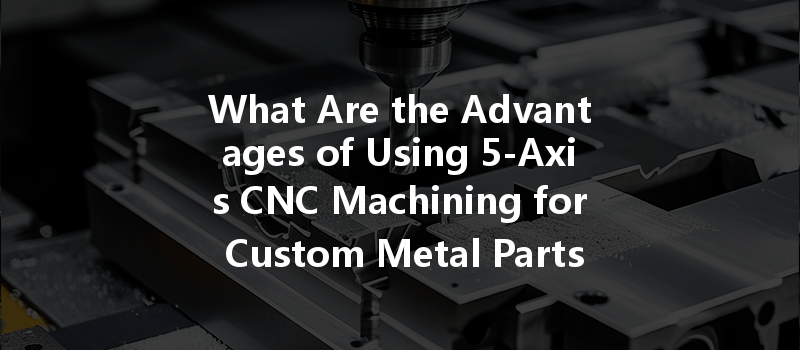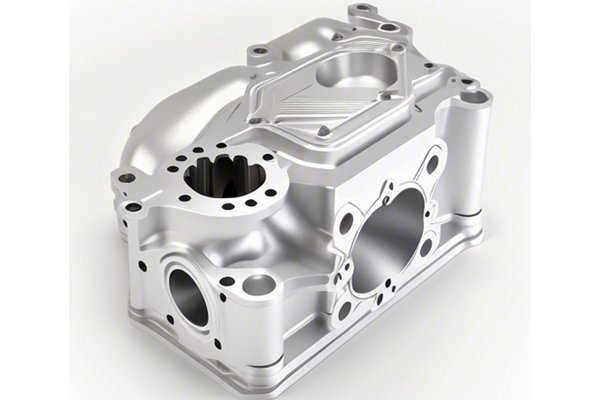Did you know that 5-axis CNC machining can reduce production time by up to 75% compared to traditional methods? For businesses in industries like aerospace, automotive, and medical devices, this technology is not just a trend; it’s a crucial innovation that can drive efficiency and product quality to unprecedented levels.
As industries evolve, the demand for precision, speed, and efficiency continues to grow. With the advent of advanced manufacturing techniques like 5-axis CNC machining, businesses have started to reap the benefits of automated control over intricate and complex designs in custom metal parts. In this blog, we’ll explore the advantages of utilizing 5-axis CNC machining, discuss its applications, delve into how it solves industry problems, and ultimately highlight why your business should consider this advanced technology.
CNC, or Computer Numerical Control, machining has revolutionized manufacturing by automating processes and providing unparalleled accuracy. Traditional CNC machines typically operate on three axes (X, Y, and Z), allowing them to perform basic cuts and shapes. However, 5-axis CNC machining significantly expands this capability, adding two additional rotational axes. This innovation allows for the tooling to approach the workpiece from virtually any angle, enhancing both the complexity of the shapes that can be created and the precision of the cuts.
5-axis CNC machining operates using a sophisticated system that manipulates the cutting tool through five different axes. In a standard 3-axis machine, the tool moves in three linear directions — left and right (X-axis), up and down (Y-axis), and forward and backward (Z-axis). In contrast, the two additional axes in 5-axis machining allow for rotation around the Y (B-axis) and X (A-axis) axes.
This sophisticated movement allows the machine to cut at various angles and orientations. By eliminating the need for repositioning the workpiece during production, 5-axis machining streamlines the manufacturing process and drastically reduces the potential for errors.
3.1 Enhanced Precision
One of the critical advantages of 5-axis CNC machining is its ability to achieve better accuracy and reduced tolerance errors. The ability to access any side of the part without repositioning ensures that dimensions remain true throughout the manufacturing process.
3.2 Increased Efficiency
5-axis machines can complete complex tasks in fewer setups, drastically improving efficiency. Since machinists spend less time repositioning materials or switching tools, the overall production rate increases, allowing businesses to meet tight deadlines without sacrificing quality.
3.3 Reduced Setup Time

The complexity involved in setup with traditional machines can be time-consuming. However, with a 5-axis machine, the need for multiple setups is minimized. Fewer setups lead to substantial time savings in the manufacturing process.
3.4 Complex Geometries
5-axis CNC machining is particularly advantageous for parts that require intricate geometries, such as those found in aerospace or medical applications. The machine’s ability to rotate and tilt allows for the creation of complex designs that would be difficult, if not impossible, to achieve with 3-axis machining.
3.5 Improved Surface Finish
The enhanced tool paths made possible by 5-axis machining result in smoother finishes compared to those produced by simpler machines. This outcome reduces the need for secondary finishing operations, saving both time and resources.
3.6 Versatility and Flexibility
5-axis machines can handle different types of materials, including metals, plastics, and composites, making them versatile enough for a myriad of applications. This adaptability is critical for businesses that need to pivot across various projects quickly.
3.7 Cost-Effectiveness
While the initial investment in a 5-axis machine may be higher compared to standard CNC machines, the long-term savings in time, manpower, and material costs often justify this expense. Companies can often produce higher volumes of complicated parts at a reduced cost per unit.
4.1 3-Axis Machining
While 3-axis machining is sufficient for simpler parts, it lacks the versatility needed for more complex designs. Parts often need to be flipped or repositioned, which can compromise accuracy and extend production time. In contrast, a 5-axis machine can create complex geometries with fewer operations.
4.2 4-Axis Machining
4-axis machining improves upon 3-axis machining by adding one rotation. However, 5-axis takes this a step further, allowing for more angles for tightening the cutting tool and executing tasks that would require multiple setups in 4-axis machining.
5.1 Aerospace
The aerospace industry often demands precision components that can withstand intense conditions. 5-axis CNC machining allows for the intricate designs and lightweight structures required for modern aircraft, while ensuring part integrity and mechanical performance.
5.2 Automotive
Automotive manufacturers use 5-axis machining for the production of customized components, engine parts, and complex assemblies. The speed and efficiency of this technology allow for rapid prototyping and shorter lead times, which are critical in a fast-moving marketplace.
5.3 Medical Devices
With patient safety and performance at the forefront, the medical device industry relies heavily on 5-axis CNC machining to produce intricate, precise components like surgical instruments, dental implants, and prosthetics.
5.4 Industrial Machinery
Industrial machinery components often need to meet exact specifications while also fitting into complicated systems. The versatility of 5-axis machining allows manufacturers to produce high-tolerance parts suited to a variety of functions.
While there are numerous benefits to using 5-axis CNC machining, there are also challenges to consider, including higher equipment costs and the necessity for skilled operators who can effectively program and manage these sophisticated machines. Additionally, not all components require the complexity that 5-axis machining offers, leading some companies to weigh the cost versus the benefit for specific applications.
Numerous manufacturers have turned to 5-axis CNC machining to solve complex design challenges:
These case studies illustrate how businesses leverage 5-axis technology to gain a competitive advantage in their respective markets.
In summary, 5-axis CNC machining represents a significant advancement in manufacturing technology that offers many advantages: greater precision, increased efficiency, reduced setup times, the ability to create complex geometries, improved surface finishes, versatility across materials, and overall cost-effectiveness.
For forward-thinking businesses in industries like aerospace, automotive, and medical devices, adopting 5-axis CNC machining is crucial in meeting modern manufacturing demands. The investment may require more initial resources, but the potential gains in speed, accuracy, and volume ultimately position companies for success in a competitive landscape.
Remember, investing in advanced manufacturing technology like 5-axis CNC machining isn’t just about keeping up; it’s about leading the charge into the future of manufacturing. Take the leap, and watch your production capabilities soar.






